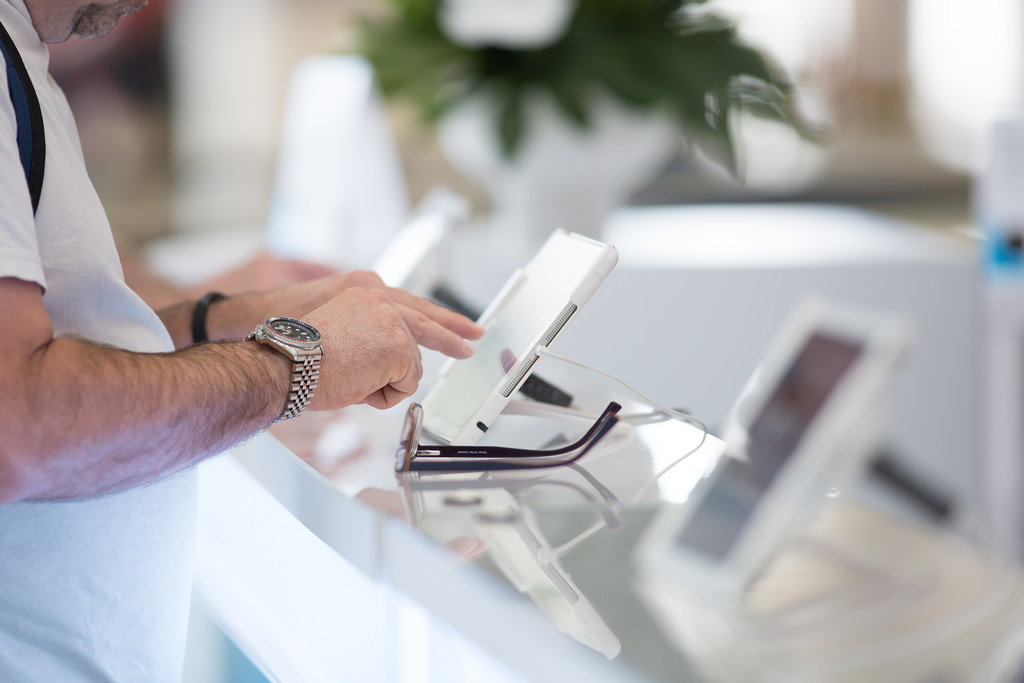When a new patient walks into your clinic for their very first treatment, what does your process involve?
For many, it may include a welcoming greeting from a receptionist, an offering of refreshments or an explanation of the clinic’s services and offerings. However, although each and every clinic has its own processes for new patients, one thing should remain the same and that is obtaining a thorough patient registration.

So, what vital information do you need from your patient in that initial visit and what must you know to make sure you are using that information correctly?
-
Get the correct personal details
Of course, accurate personal details for each and every new patient, including their full name, number, email, and postal address, is essential to ensure that you can get in touch with them again. Why do you need to get in touch with them again when they are already giving you business? Because by obtaining this information you have the power to market to them and encourage them to return to your clinic. Returning customers hold high value as data has shown that repeat customers are responsible for generating 40% of a business’s revenue.Also, be sure to get other personal information like the patient’s date of birth, not just to aid your clinical assessment, but to also assist in marketing. For example, you might want to send them an email, text or card on their birthday or even offer them a discount on your services to encourage their next booking.
To further help your marketing efforts, getting information about their interests might also be useful so that you may effectively target your marketing efforts to specific groups and ensure optimum success. If they are interested in skincare, for instance, then you can send them updates when you have new products in your clinic.
It is also suggested that you ask for the details of an emergency contact; however, it is not advised to use this information in the same way as you would a patient’s as you would not have obtained their consent, which is discussed below.
-
Obtain a thorough medical history
If you are performing medical treatments at your clinic then it is best practice to obtain accurate medical records and to keep these up to date. We all know that treatments such as dermal fillers, botulinum toxin, lasers and many others come with the risk of side effects, and if you do not have an accurate and updated medical history on file then it can put your patients at risk. Of course, before every different treatment you should be checking for specific contraindications, but in your first patient registration it is useful to know the following:
- Previous non-surgical medical aesthetic treatments
- Current medication
- Known allergies
- Previous surgeries
- Current and past mental health issues
- Illnesses
- Current general practitioner
-
Receive patient consent
What do you need patient consent for? Rules around patient consent can vary according to jurisdictions and could be another post in itself. However, the EU General Data Protection Regulations, which will come into effect in May 2018 are a good resource to ensure you are compliant to legislation. As a general rule, you need to get consent to:
- Hold their data: patients must express permission for a business to hold their data and it must be easily withdrawable.
- Market to them: you must not send marketingemails or texts to individuals without specific consent. This should also be withdrawable and an ‘opt out’ should be clearly stated within each and every piece of marketing material.
- Contact their GP: patients must provide you with permission for you to consult their GP regarding any treatments the patient has at your clinic.
- Use their images: taking before and after images is good practice and it is a necessity to gain the patient’s consent before you use these images in any way such as for marketing or education purposes.
How do you manage this information?
Whether you obtain your patient’s information via an electronic form or hard copy, this needs to be appropriately stored. Maintaining a digital database of patient records will keep track of your patients and ensure that you can access information quickly and be able to update it easily.
If you have not already, you should strongly consider introducing an electronic medical record (EMR) and customer registration system (CRM) into your practice. Systems like Clinicminds, which can store all the above information in an easy to use and secure way, include features such as customisable record fields so that you can tailor each patient and a tab based system, which allows for easy and quick access to every different category of information you have.
All in all…
By ensuring that you obtain all the above essential information from your patients in their very first visit, you will be able to have an in-depth database of patient records. If you choose an EMR and CRM system like Clinicminds to store this data for you, it will be stored securely and in an organised, user-friendly way. This will not only assist you in providing the best medical care to your patients, but it will also help you to keep them coming through your door by using cleverly targeted marketing, which will be discussed in another post!
If you would like to see an example of a patient registration form, you can download an example here.
Further reading:
- Health Education England, ‘PART ONE: Qualification requirements for delivery of cosmetic procedures: Non-surgical cosmetic interventions and hair restoration surgery’, 2015.
- DDS Safety Net, ‘Understanding the Importance of Medical History’.
- General Medical Council, ‘Good Medical Practice’, 2017.
http://bit.ly/Good_Medical_Practice
- General Medical Council, ‘Cosmetic procedures: what do I need to consider?
http://bit.ly/Cosmetic_procedures_what_to_consider
